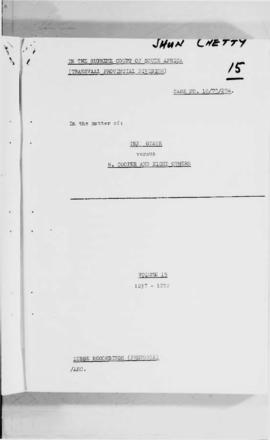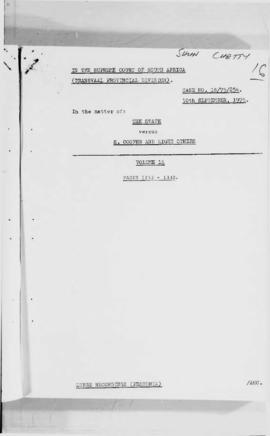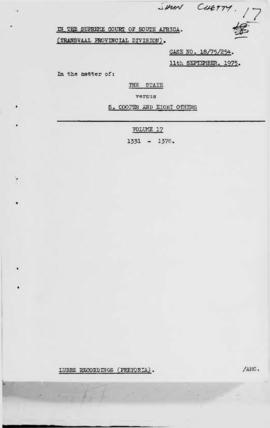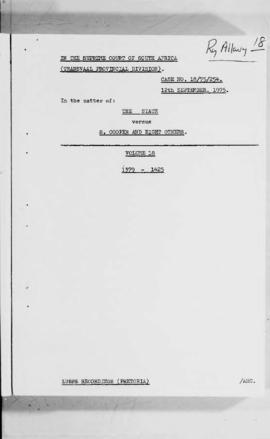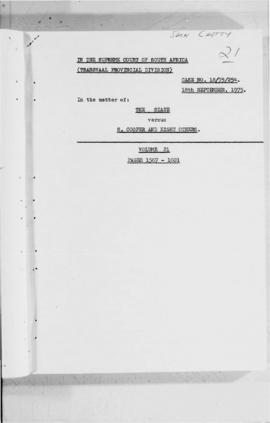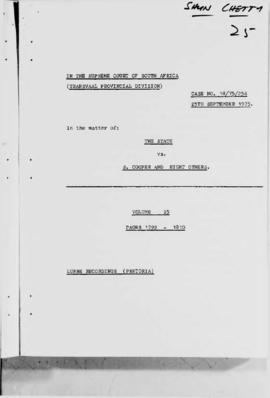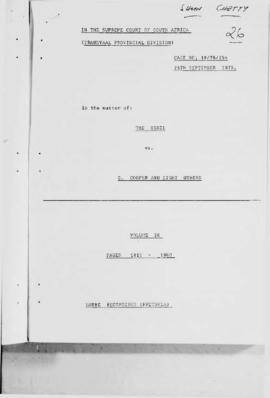Área de identidad
Código de referencia
Título
Fecha(s)
- 1975-1976 (Creación)
Nivel de descripción
Fondo
Volumen y soporte
11 reels negative microfilm
Área de contexto
Nombre del productor
Historia administrativa
After the formation of the Union of South Africa in 1910, legislation was enacted which discriminated against the non-White section of the population and increased the racial segregation existing at the time of Union. This angered many Blacks and caused a series of strikes by Black workers. By the 1920s responsible Europeans, particularly churchmen, saw the importance of bringing the races together. Native Welfare Societies, consisting of liberal and philanthropic Europeans, were founded which in due course were replaced by Joint Councils, inter-racial in character.
The Joint Council movement was largely the inspiration of Dr. Thomas Jesse Jones and Dr. J.E.K. Aggrey who in 1921 conducted a study tour of education in South Africa on behalf of the Phelps-Stokes Fund of the United States of America. They had seen the value of inter-racial councils in America and persuaded Dr. C.T. Loram, Chief Inspector of Education in Natal, and his friend J. D. Rheinallt Jones, Secretary of the Witwatersrand Council of Education, to establish a multi-racial organisation with the aim of promoting understanding and goodwill between the races. Rheinallt Jones founded the first Joint Council of Europeans and Africans in Johannesburg in 1921 and by 1931 there were in existence thirty European-African Joint Councils' three European-Indian Joint Councils and a European-Coloured Joint Council was in the process of formation. In all eighty Joint Councils were established, many of them continuing to exist side by side with the Institute of Race Relations after it was founded in 1929. By 1951 only two Joint Councils remained, of which only one was active.
During visits to South Africa in the 1920s Dr. Jesse Jones convinced Rheinallt Jones of the need to set up a national body to centralise interracial activities. The project was made possible by finance from the Phelps-Stokes Fund and the Carnegie Corporation. Rheinallt Jones convened an inter-racial conference in Cape Town in January 1929 which revealed enthusiasm for a national organisation. He called together a committee of seven prominent South Africans not connected with any political party - E.H. Brookes, Professor J. du Plessis, Professor D.D.T. Jabavu, Dr. C.T. Loram, T.W. Mackenzie, J.H. Nicholson and J.H. Pim. They met on 9 May 1929 at the house of the Rev. Dr. R.E. Phillips in Johannesburg, resolved to fern a South African Institute of Race Relations and elected C.T. Loram chairman Howard Pim treasurer and Rheinallt Jones secretary.
With the deaths of Mackenzie end Nicholson and the transfer of Loram to a professorial chair at Yale, the Committee was reduced to six but in 1930 Dr. J.G. van der Horst was added and in 1931 Professor R.F.A. Hoernle, Leo Marquard and Senator Lewis Byron. These ten committee members are regarded as the foundation members of the Institute.
Institución archivística
Historia archivística
Origen del ingreso o transferencia
The collection forms part of the archives of the South African Institute of Race Relations (SAIRR).
Área de contenido y estructura
Alcance y contenido
In 1974 SASO/BPC members were arrested for staging Viva Frelimo rallies at Curries Fountain and at Turfloop University, and charged. They were Saths Cooper, Muntu Myeza, Strini Moodley, Patrick ‘Terror’ Lekota, Nchaupe Mokoape, Pandelani Nefolovhodwe, Nkwenkwe Nkomo, Kaborone Sedibe and Zithulele Cindi. Their trial, officially known as 'State vs Cooper and Eight Others', dragged on for 16 months, after which the accused were found guilty and sentenced to five and six-year terms on Robben Island.
Steve Biko appeared as one of the defence witnesses in the trial in May 1976, and his testimony is included in the court records. The records also include 'The Definition of Black Consciousness'.
Valorización, destrucción y programación
Acumulaciones
Sistema de arreglo
Área de condiciones de acceso y uso
Condiciones de acceso
Condiciones
Idioma del material
Escritura del material
Notas sobre las lenguas y escrituras
Características físicas y requisitos técnicos
Instrumentos de descripción
Uploaded finding aid
Área de materiales relacionados
Existencia y localización de originales
Existencia y localización de copias
Unidades de descripción relacionadas
Área de notas
Notas
The digitisation of the court records was made possible by a generous grant from The Atlantic Philanthropies.
Court records (Item A), Correspondence (Item X) and Documentary Exhibits (Item Z) were digitised from microfilm copies.


